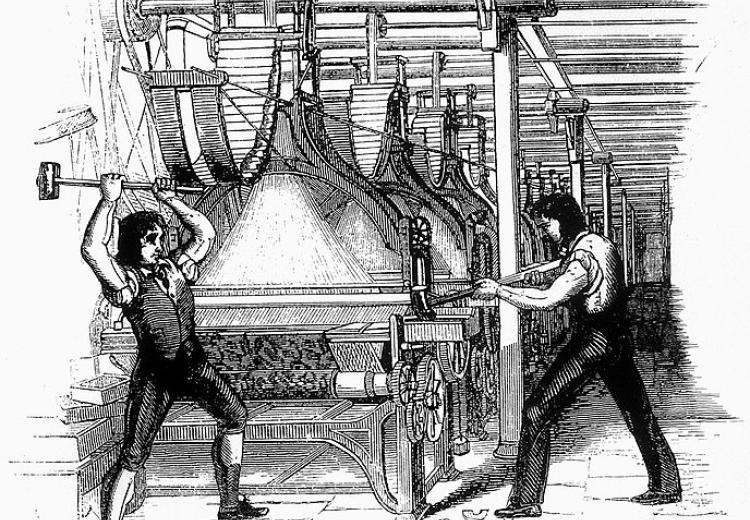BackStory: Man vs. the Machine - Technophobia and American Society

Though their name is now used to signal a generalized, and usually negative, aversion to technology, the Luddites in England targeted very specific kinds of machines that posed a threat to their livelihoods. In 1721, the British government criminalized the destruction of machines and in 1812 made it a capital offense.
Technological and scientific changes are often portrayed as steps in a linear narrative of “progress” or “development.” The reality is far more complex. Rapid technological change can cause significant economic and social dislocations, the brunt of which are often borne unequally. And the pervasive idea that technology is somehow apolitical or neutral obscures the fact that the creation and dissemination of new technologies are always embedded in political and social landscapes.
This episode of BackStory entitled "Man vs. the Machine: Technophobia and American Society" discusses the ways people in the U.S. have responded to technological changes over the centuries, highlighting that suspicion of such changes is often reasonable and warranted, especially for minority and marginalized groups.
A full transcript of the episode is available at the BackStory website.
